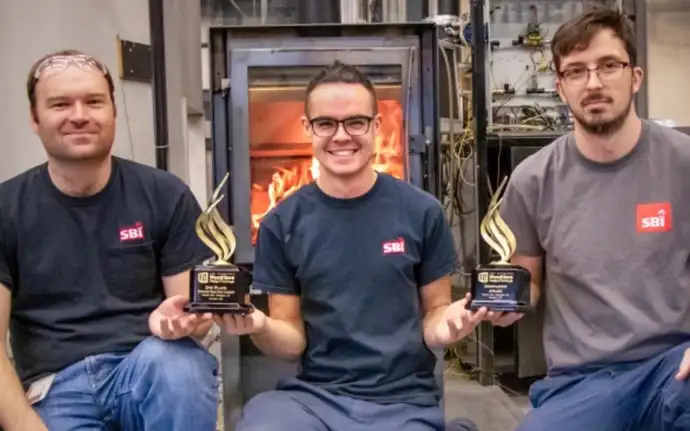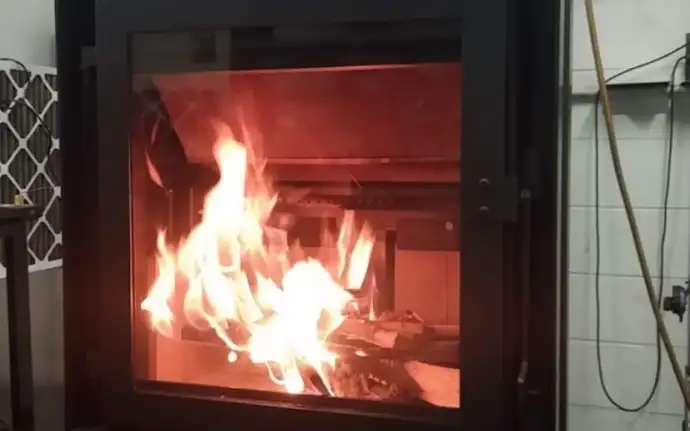Designing wood stoves for a cleaner future
Tell us about the stove you brought to the Wood Stove Design Challenge! How was it different to the other SBI stoves? What goals did you want the stove to achieve?
We brought a concept stove to the Wood Stove Design Challenge to show off what we can do. Our goal was to make a stove that is very clean to meet regulations that will go into effect in the U.S. in 2020. We also wanted one with a big glass-ceramic viewing panel so you can see the fire. It had to have a small footprint on the floor and an unobtrusive rear chimney.
We designed the stove so that it can regulate its own combustion with any kind of wood source. There are two intakes and the system monitors whether combustion occurs at the right temperature. If not, say if the wood has a high moisture content, or if the door was recently opened, it keeps the intakes open.

What was the design process like?
For the past few years, we’ve been using computational fluid dynamics to simulate what happens in the firebox. The idea is that we can run a computer simulation to make the firebox better before getting to the real-world testing. We looked at all the things we wanted – the large viewing panel, the rear chimney, and the small footprint. We can get to the point where we can take a design and have a good idea of the quality of its combustion before prototyping.
How is testing the stove different for environmental regulations versus the design challenge?
When you are testing for EPA certification with cordwood, tests are done with a high loading density and the logs are quite large. The Wood Stove Design Challenge is much closer to how people actually use wood stoves. The moisture content varies, there is small kindling and larger logs. So after we developed a prototype, we completed additional testing to replicate these real-world conditions. Eventually we were able to fine tune it to get what we wanted.

How did you incorporate SCHOTT ROBAX® glass-ceramic into your design?
We’ve used SCHOTT ROBAX® for more than 20 years. Its combination of properties are great and allows us to use large viewing panels without the risk of failure.
For example, as we prepared for the Wood Stove Design Challenge, we used a panel that was 5 mm thick since the viewing panel we wanted was quite big. Especially during the prototype phase, the risk of a wood log falling into the glass-ceramic is really high. We knew ROBAX® would provide the durability we needed should a log shift during testing.
It’s also easy to clean and it stays clean. That’s a big challenge in the wood stove industry as people want to see the fire. To see the fire, you need a clean glass-ceramic. ROBAX® is the only glass-ceramic we use.
April 4, 2019


Gabrielle Bouren
Sales Manager SCHOTT ROBAX®